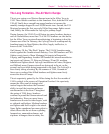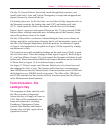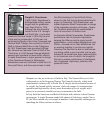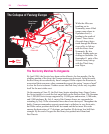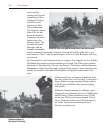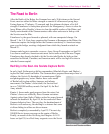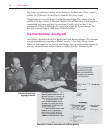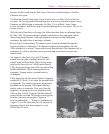
Chapter 7 The Big Picture: A Short History of World War II
157
The Soviet campaigns of 1943−1944 have proved decisive. Russia regains most of
the territory lost in 1941 and 1942; more importantly, the Soviets have destroyed
entire German armies. Hitler contributes significantly to these losses, refusing to
allow withdrawals that could have saved hundreds of thousands of soldiers for a
final defense of Germany. Instead, the Red Army is now rolling inexorably toward
Berlin.
The Last
Blitzkrieg
The Battle of the Bulge
Even as Germany reels from blows from the east and west, Hitler looks for an
opportunity to counterattack. He orders garrisons in port cities in France to hold
out, and he stations forces in the mouth of the River Scheldt. This latter move
prevents the Allies from using the harbor at Antwerp, even though the Allies
capture the city on September 4. Hitler also orders the formation of 25 new
Volksgrenadier divisions to man his western defenses.
The planned counterattack, code-named Autumn Mist, is intended to drive an
armored wedge through the Ardennes forests, across the River Meuse, all the way
to Antwerp. This wedge will divide the British and Canadian forces in the north
from the Americans in the south. Hitler believes Autumn Mist will create enough
confusion and buy enough time to transfer German forces east to launch a similar
blow against the Red Army.
Rundstedt and Model disagree with Hitler, but to no avail. Eight Panzer divisions
are re-equipped and ready to spearhead the assault, aimed at four inexperienced
or worn-out American divisions. The Germans maintain strict radio silence
concerning Autumn Mist, so for once there is no warning from the Allied
codebreakers. Even when forward units report
increased activity on their fronts, Allied com-
manders discount the reports; they believe the
Ardennes forests are far too difficult for the
Germans to advance through them.
The weather plays a crucial role in the German
attack. The winter of 1944 proves to be one of the
coldest on record. More importantly, the spell of
bad weather the Germans had been hoping for
a
heavy cloud cover to minimize Allied air
power
finally arrives in mid-December.
On December 16, the Germans launch their last
blitzkrieg. The Americans in front of the assault
are soon overrun, but their unexpectedly stiff
defense slows the German time table. Eisenhower
Scale of Area
The geographic area encompassed by
the Normandy Campaign is minuscule
compared to the Eastern Front. From
Cherbourg to Caen is less than 80
kilometers by air, and it is less than 35
kilometers from Omaha Beach to
Saint-Lôroughly the distance between
Washington, D.C. and Baltimore, Maryland.
At the height of the fighting between
Germany and the Soviet Union, the Eastern
Front stretched from Leningrad in the north
to the Caucasus Mountains in the south.
This distanceapproximately 1,900
kilometersis roughly the same as the
distance between New York City and
Bismarck, North Dakota.



